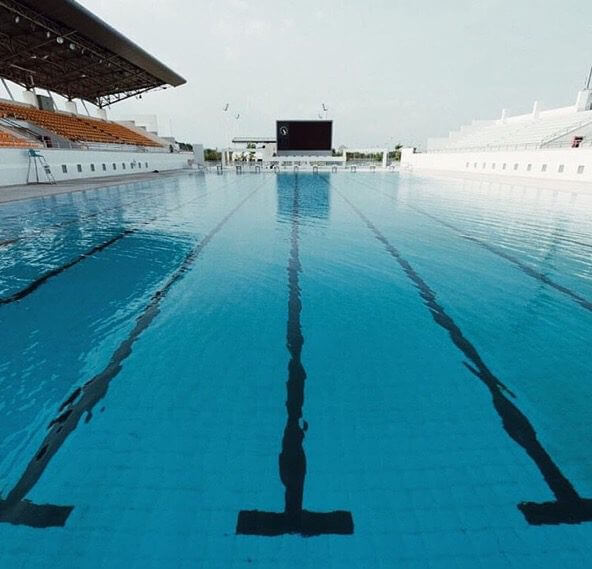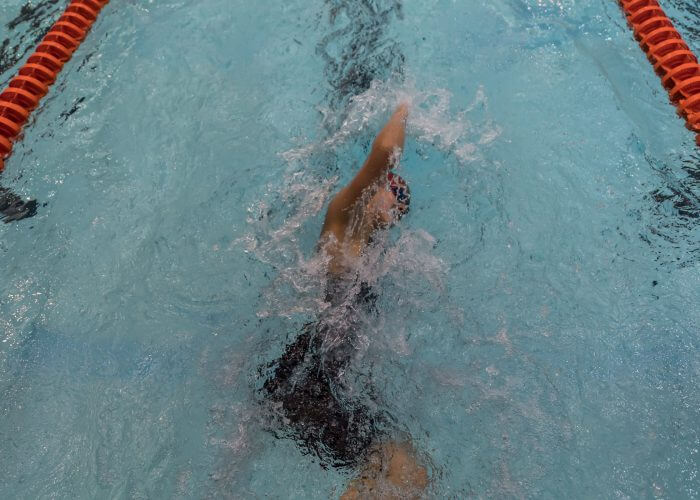Short Course vs. Long Course: The Pros and Cons of Each Pool

Short Course vs. Long Course: The Pros and Cons of Each Pool
By Shweta Krishnan, Swimming World Magazine Intern
For some people, hearing the three words “long course season” sends them into a sense of despair and gloom as they wonder how they will survive the upcoming summer months. Others welcome this part of the year with open arms, excited for their favorite time of the season. It’s obvious that there is a distinct divide between those who favor short course and long course, and very few swimmers are fans of both. Many view this as a black and white issue, and have a wide variety of reasons as to why their choice is the right one. Let’s take a look at the advantages and disadvantages of each type.
Short Course Pros
Familiarity
For the most part, everyone starts out swimming short course. Whether it is in your neighborhood pool on a summer league team or joining a year-round club team, you find yourself becoming most familiar with the 25-yard length pool day after day. Swimmers often spend 75% of the year training in this pool, compared to the very few months spent training long course.
More Walls, More Underwaters and Breath Control

Photo Courtesy: Peter H. Bick
As someone who has a shorter body type, underwaters are my best friend. I use them to my advantage because I know that while I may not have the long reach like typical swimmers, I can still use underwaters to help me improve in my races. Along with practicing underwaters comes breath control and this can help in all facets of swimming, including in the last 15 yards of a race when you are struggling for air.
Short Course Cons
The Number of Walls Can Become a Hassle
While practicing turns is beneficial, the number of walls really can drag a swimmer down. Let’s be real. It’s human nature to see a wall in front of you and automatically slow down because obviously your brain wants to avoid an accident. As the races get longer, the turns can become sloppy, becoming a disadvantage to your time.
Difficulty for Distance Swimmers
For distance swimmers, having to count 66 laps at practice during short course season when training for the mile is exhausting. While there are lap counters at meets, it really helps distance swimmers having fewer walls and laps to do because it allows them to truly focus on endurance and speed. Rather than trying to remember what lap they are on and most likely forgetting, they are able to focus more on the actual race without the added mental pressure.
Long Course Pros
Endurance
While short course is all about turns, long course is geared toward building endurance and speed throughout each lap. Swimmers have to consistently keep their technique and build speed in a pool that is twice as long, and that itself is not an easy task.
Change
Many of us love familiarity and keeping things constant in our lives. But in the sport of swimming, a little change can be good for the mind. It keeps people from becoming complacent and bored with a little change of scenery. Plus, it allows swimmers to have a fresh start and focus on new goals for the season ahead.
Long Course Cons
Each Lap Feels Like Eternity
We’ve all been there at one point in the middle of practice in a long course pool. Your mind drifts to your after-practice meal and seemingly five minutes later, you’re still on the same lap. Each lap is like a vast expanse of water and you never know when you’ll reach the other side. Take a 200 free for example. In short course, there are eight laps, quick and easy. Conversely, in long course, there are four long laps. By the time you’re done, you feel like you’ve done a 500-yard free and your energy is drained.
Less Familiarity
Typically, high school, summer league, and even most year-round meets are done in short course yards. But when the long course season sneaks up around spring time, swimmers are forced to adjust in a short amount of time. It can be extremely difficult, especially because the season is much shorter compared to short course. This means it allows for less time to adjust to the new season before competing because of the tight schedule.
Regardless of which pool style you like better, training in each pool has its advantages and disadvantages. How you approach it mentally is what will help you in the long run.
All commentaries are the opinion of the author and do not necessarily reflect the views of Swimming World Magazine nor its staff.




One should be called swimming, while the other should be called ‘starts and turns’ since it is essentially a different sport.
Keely Peatling exactly our convo the other day
did coral springs long course today in meters…really different…but i like less turns..800 tomorrow……will focus??great article..thxs